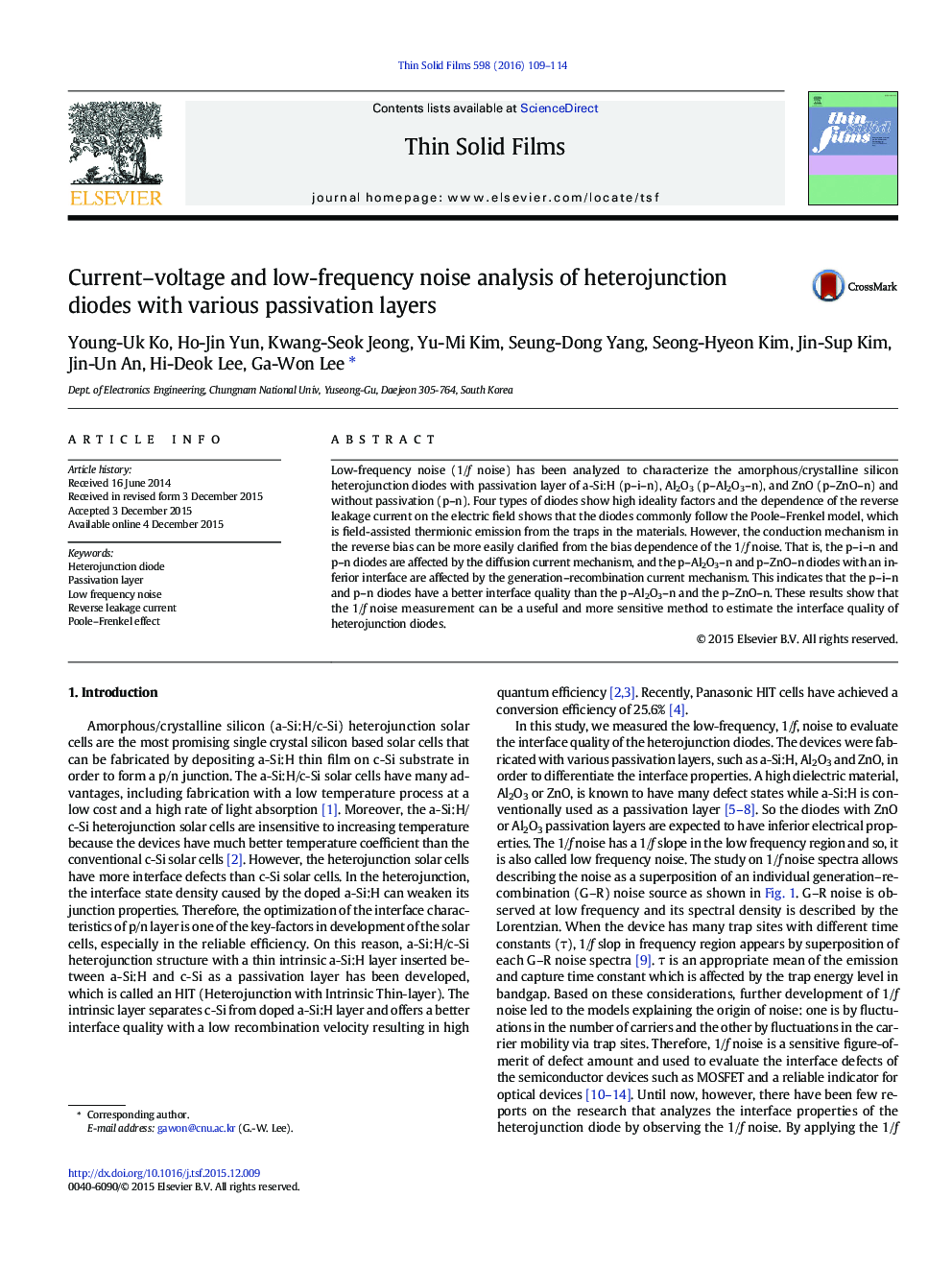| Article ID | Journal | Published Year | Pages | File Type |
|---|---|---|---|---|
| 1664445 | Thin Solid Films | 2016 | 6 Pages |
•Leakage current is on Poole–Frenkel in heterojunction diode with inferior interface.•Low-frequency noise is proposed to evaluate heterojunction diode.•Low-frequency noise is useful to distinguish the leakage conduction mechanism.
Low-frequency noise (1/f noise) has been analyzed to characterize the amorphous/crystalline silicon heterojunction diodes with passivation layer of a-Si:H (p–i–n), Al2O3 (p–Al2O3–n), and ZnO (p–ZnO–n) and without passivation (p–n). Four types of diodes show high ideality factors and the dependence of the reverse leakage current on the electric field shows that the diodes commonly follow the Poole–Frenkel model, which is field-assisted thermionic emission from the traps in the materials. However, the conduction mechanism in the reverse bias can be more easily clarified from the bias dependence of the 1/f noise. That is, the p–i–n and p–n diodes are affected by the diffusion current mechanism, and the p–Al2O3–n and p–ZnO–n diodes with an inferior interface are affected by the generation–recombination current mechanism. This indicates that the p–i–n and p–n diodes have a better interface quality than the p–Al2O3–n and the p–ZnO–n. These results show that the 1/f noise measurement can be a useful and more sensitive method to estimate the interface quality of heterojunction diodes.
